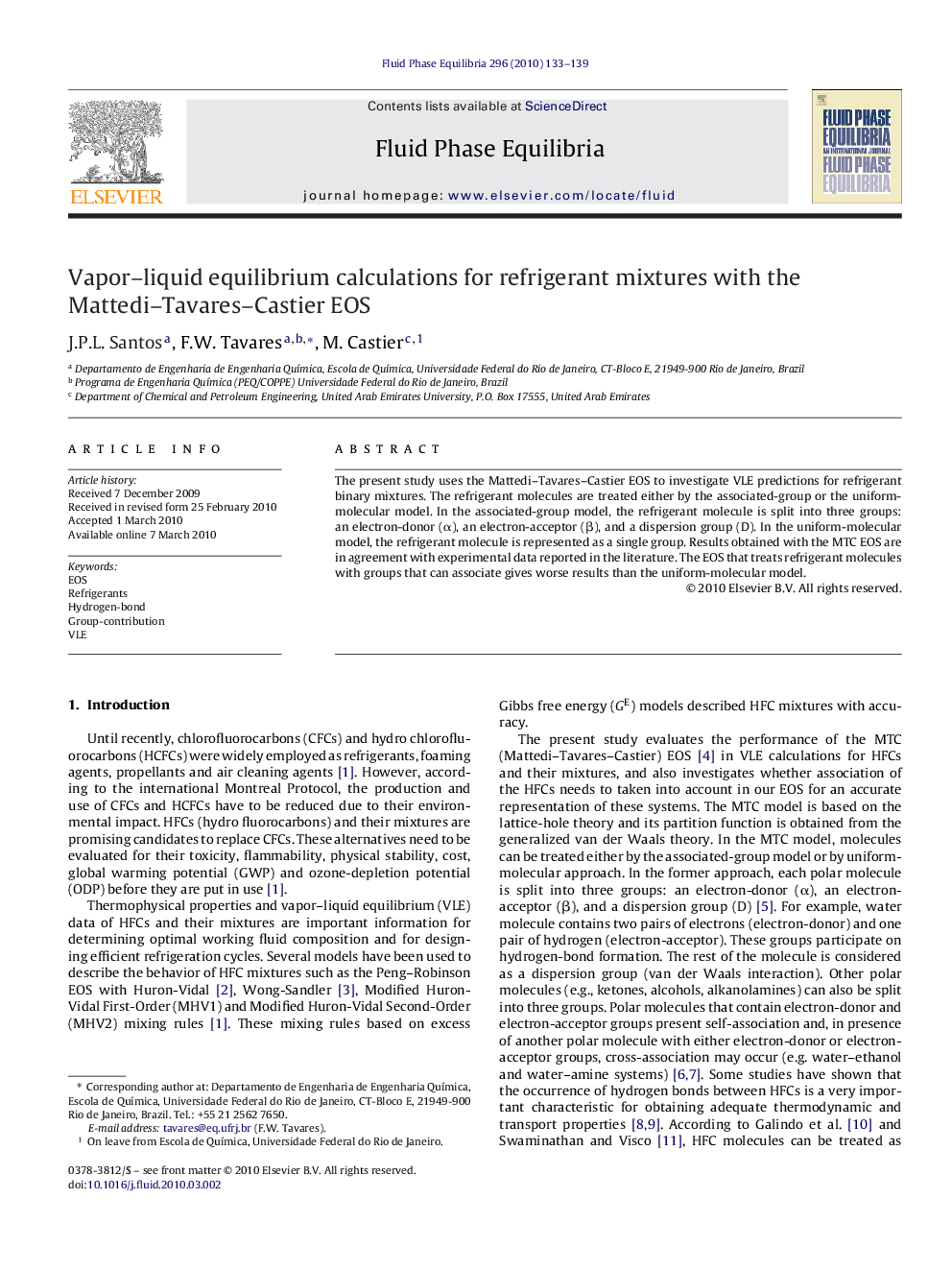| Article ID | Journal | Published Year | Pages | File Type |
|---|---|---|---|---|
| 202601 | Fluid Phase Equilibria | 2010 | 7 Pages |
Abstract
The present study uses the Mattedi–Tavares–Castier EOS to investigate VLE predictions for refrigerant binary mixtures. The refrigerant molecules are treated either by the associated-group or the uniform-molecular model. In the associated-group model, the refrigerant molecule is split into three groups: an electron-donor (α), an electron-acceptor (β), and a dispersion group (D). In the uniform-molecular model, the refrigerant molecule is represented as a single group. Results obtained with the MTC EOS are in agreement with experimental data reported in the literature. The EOS that treats refrigerant molecules with groups that can associate gives worse results than the uniform-molecular model.
Related Topics
Physical Sciences and Engineering
Chemical Engineering
Chemical Engineering (General)
Authors
J.P.L. Santos, F.W. Tavares, M. Castier,
